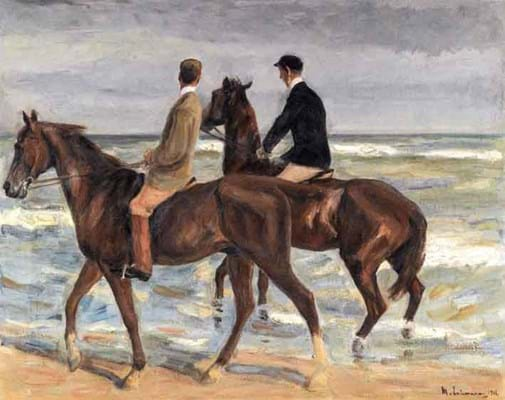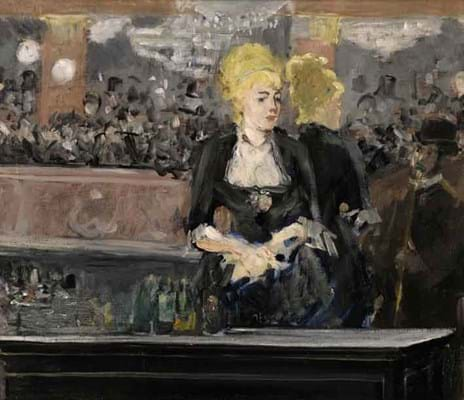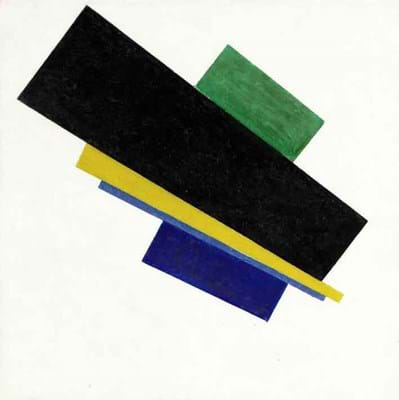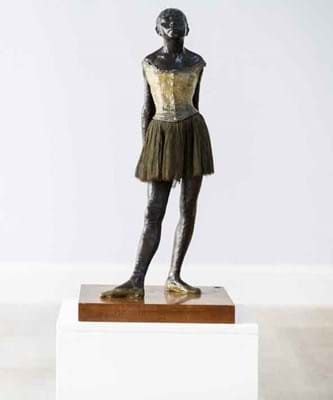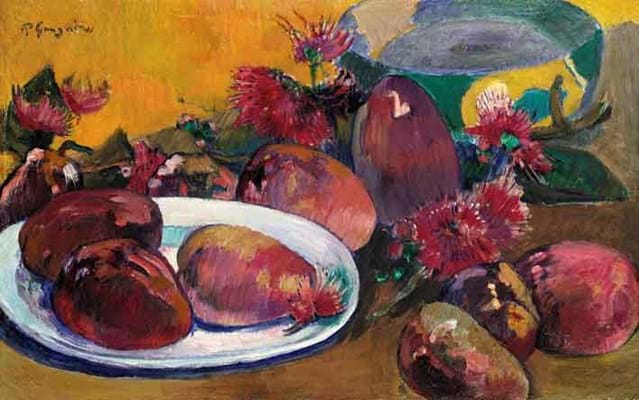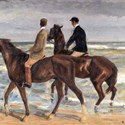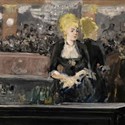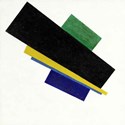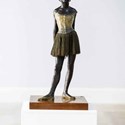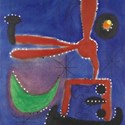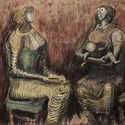The portrait from 1902 drew a dramatic competition between a phone bidder and a lady in the room who was receiving instructions on her mobile phone. It took over 10 minutes to sell.
Bidding opened at £9.5m and went up in increments of £100,000 although Sotheby's auctioneer Henry Wyndham was able to coax larger bids from the room bidder including three jumps of £400,000 at a time.
Competition seemed to stall at £18.5m when the phone bidder appeared to have dropped out, only to come back in at £18.6m.
"Is anyone still awake," said Wyndham from the rostrum as he looked around for any other interested parties. There was a round of applause in the saleroom when the hammer was finally knocked down to the unidentified buyer sitting in the fourth row.
Restitution Settlement
The picture itself was consigned to Sotheby's following a settlement between the heirs of the painting's subject and the Klimt Foundation in whose possession the work had been until an agreement to sell it was reached last year. The 4ft 11in x 17¾in (1.5m x 45cm) signed oil on canvas had been taken by the Nazis when they took possession of the Felsovanyi family home in Vienna in 1939.
Estimated at £12m -18m, it was one of the few works by Klimt to have appeared on the market since four major oils by the artist emerged after being restored to the heirs of another of the artist's models Adele Bloch-Bauer. They sold at Christie's New York in November 2006 raising a combined premium-inclusive $192.7m.
While Adele Bloch-Bauer I, part of the same collection, was bought privately by cosmetics magnate Ronald S. Lauder for $135m in June 2006, the auction record for Klimt remains the $78.5m (£43.4m) made by Adele Bloch-Bauer II at the landmark Christie's auction.
With most works by Klimt now in museums, the picture at Sotheby's was a rare opportunity to acquire a fully finished oil by the artist even if the colours were not as bold as other major works by the artist, especially those where the artist used gold as well as paint on the canvas. Only four portraits by Klimt have come to auction in the last 20 years.
The buyer of picture was the most active bidder in the sale, also securing Edgar Degas' Petite danseuse de quatorze ans for £14m - a record for a sculpture by the artist. Chaim Soutine's Le Valet de Chambre and Marc Chagall's Les Amoureux de Vence were also knocked down to the same paddle number at £9.5m and £2.4m respectively.
The overall total for the sale was £178.6m (including premium) which was the second highest for an auction in this category at Sotheby's London and was above the £122m posted at the equivalent sale last year. The presale estimate was £140.3m-203.2m. The sale offered 50 lots of which 42 sold (84%)
The total was also outscored Christie's sale the night before which made £71.5m (including premium) against a presale estimate of £58.7m-85.2m.
Gurlitt's Riders
Also drawing strong competition at Sotheby's sale was the first painting to be sold from Cornelius Gurlitt's hoard of art.
Max Liebermann's Zwei Reiter am Strand nach links (Two Riders on a Beach) was restituted to the heir of the painting's original owner in May and Sotheby's offered it here with an estimate of £350,000-550,000.
Five bidders chased the 2ft 4in x 3ft oil on canvas and it sold to an anonymous telephone buyer at £1.55m.
Zwei Reiter was first shown in public the year it was painted in 1901 when it was acquired by the Breslau industrialist and art collector David Friedmann (1857-1942). His great nephew David Toren, 90, who lives in New York, recalled seeing the painting on the day after Kristallnacht as Friedmann prepared to sign over his country estate in a forced sale to a high-ranking Nazi official.
"We travelled in the Gestapo's open-top Mercedes that collected my father and took us to my uncle's home. I was instructed to wait outside the room in which the paperwork was being signed, and it was there, in the conservatory, that I sat opposite the beautiful painting of the two horse riders on the beach. I had always liked horses, and it was on my uncle's estate that I had learned to ride, so I very much admired this painting. That was the last time I saw the work."
In July 1942, four months after David Friedmann had died, Zwei Reiter was sold at auction for 1600 Reichsmarks and soon after was acquired by the art dealer Dr Hildebrandt Gurlitt.
It was among the cache of 1406 paintings found in his son's Munich apartment in February 2012.
Cornelius Gurlitt died in 2014, having bequeathed the collection to the Kunstmuseum Bern and committed to returning those works that were demonstrably lost by Jewish collectors during the Nazi era.
The German government returned Zwei Reiter to David Friedmann's heirs on May 13.
The buyer's premium at Sotheby's was 25/20/12%.



